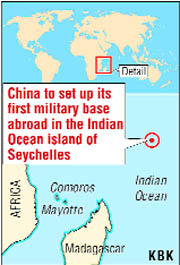TORONTO - Canadians are expected to get "a welcome break" at the supermarket cash register next year as the rise in food prices slows, the University of Guelph said Monday in its annual forecast.
"It is good news for the short term," said Sylvain Charlebois, the university's associated dean of research and development and a co-author of the study.
"Certainly for Canadians with less means, it will allow them to recalibrate their budget and focus on other things than food."
In their 2012 Food Price Index, Charlebois and economics professor Francis Tapon predict that general food prices will increase about two per cent from Dec. 1 this year through the end of November 2012.
A year ago, the university predicted food price inflation of between five and seven per cent — just slightly above the actually overall rate of 4.9 per cent in the 12-month period.
Next year, meat products are expect to see a price increase of about three per cent, compared to a rise of about five per cent in 2011, while the price of fresh vegetables will go up one to three per cent in 2012, versus a jump of 10 per cent this year.
Also, baked goods prices are expected to rise three per cent, much slower than the seven per cent increase this past year.
"I think 2012 will provide Canadian consumers with a welcome break," Charlebois said in a telephone interview.
Food prices have been on the upswing in recent years as input costs have surged, including for fuel used to transport goods and for commodities generally.
"We saw significant increases in retail prices (in 2011), primarily because input prices went up significantly," Tapon said in the report.
However, in the coming year, the country's major food distributors — Loblaw (TSX:L), Metro (TSX:MRU.A) and Sobeys (TSX:EMP.A) — are expected to have a much tougher time putting through price increases in the face of a slowing global economy and relentlessly increasing competition.
Producers continue to benefit from strong prices as commodity prices have stabilized over the last six months "so we're not too concerned about farmers, per se," Charlebois said.
"I'm mostly concerned about distributors. So in the middle of the supply chain... these players will be under a lot of pressure moving forward because of the changing landscape in the food industry."
Although input cost remain relatively high aggregate demand will soften because of the overall economy, he said.
"The unemployment rate is relatively high and wages aren't going up so they'll feel hard pressed to increase prices at retail," he said.
"As well, Wal-Mart has certainly sent signals in 2011 that it intends to become more competitive in Canada, opening new supercentres and also in 2013 Target is planning to enter the Canadian market."
"And, unlike in the United States, Target intends to grab a significant market share in Canada in food, which is interesting," Charlebois said.
Market penetration for Target is expected to be quite high, aided among other things by the strategic alliance the American discount giant signed with Sobeys in September.
For Sobey's, whom Charlebois described as No. 2 in Canada behind Loblaw, "this is really about becoming No. 1 so its going to be interesting to watch as things unfold in 2012 and 2013."
Among the variable that can greatly affect food price predictions, the most important is weather.
"Climate (floods, drought and the like) can actually destroy our entire forecast exercise," Charlebois said.
But one variable that is expected help keep the lid on prices this year is oil, which remains well under US$100 a barrel amid an uncertain world economic outlook.
"Because of the sluggish global economy we expect oil demand to be somewhat subdued, which likely will have an impact on the food-to-fuel ratio," he said.
"So we don't expect farmers to grow for fuel because oil remains affordable, basically. When we saw a barrel of oil at US$146 — at a record high — that's when we really saw a significant increase of the major commodities be traded in Chicago and Kansas City."

 The naval fleet may seek supplies or recuperate at appropriate harbours in Seychelles or other countries as needed during escort missions, the Chinese Defence Ministry announced here today.
The naval fleet may seek supplies or recuperate at appropriate harbours in Seychelles or other countries as needed during escort missions, the Chinese Defence Ministry announced here today.